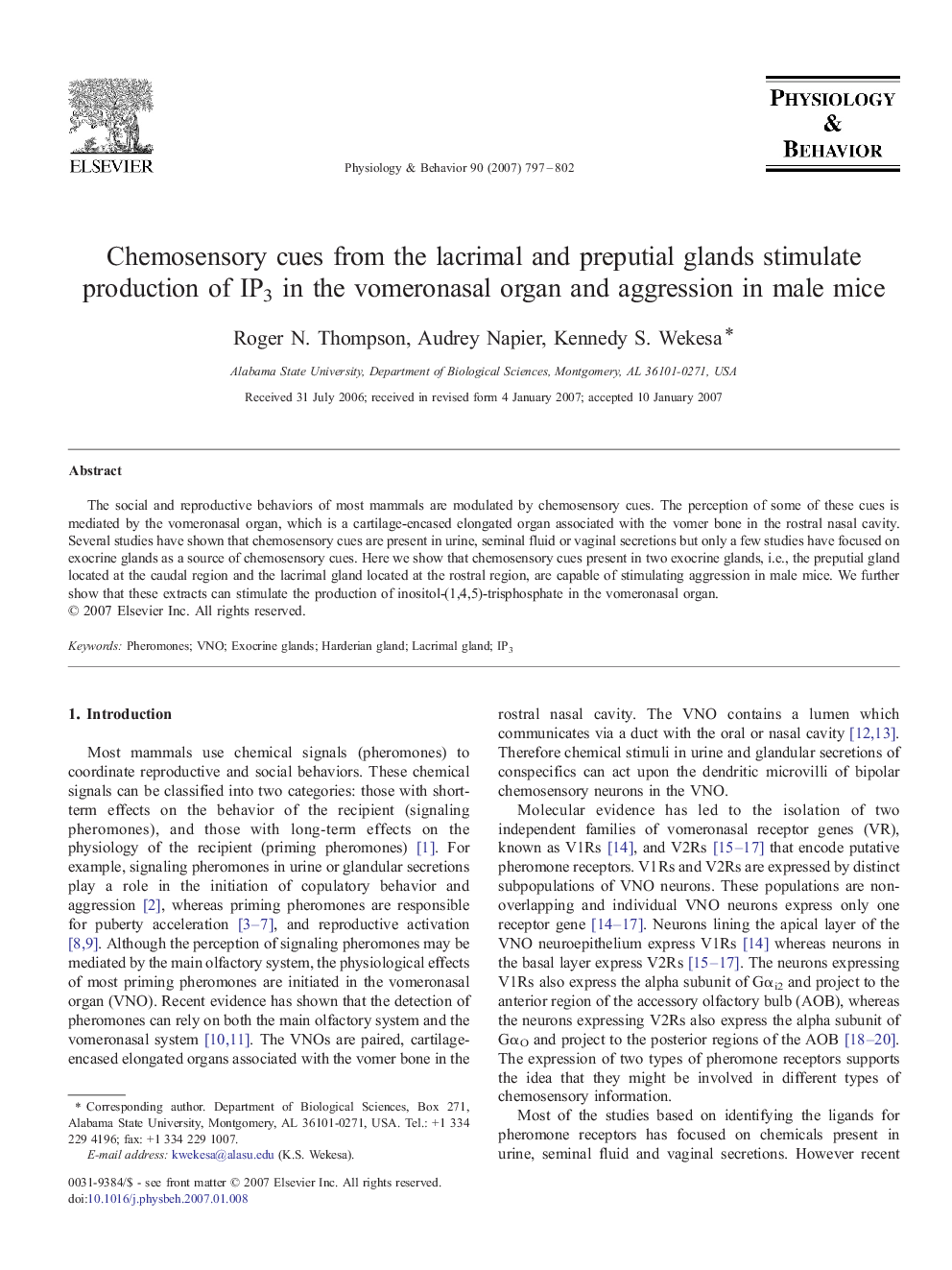| Article ID | Journal | Published Year | Pages | File Type |
|---|---|---|---|---|
| 2845881 | Physiology & Behavior | 2007 | 6 Pages |
The social and reproductive behaviors of most mammals are modulated by chemosensory cues. The perception of some of these cues is mediated by the vomeronasal organ, which is a cartilage-encased elongated organ associated with the vomer bone in the rostral nasal cavity. Several studies have shown that chemosensory cues are present in urine, seminal fluid or vaginal secretions but only a few studies have focused on exocrine glands as a source of chemosensory cues. Here we show that chemosensory cues present in two exocrine glands, i.e., the preputial gland located at the caudal region and the lacrimal gland located at the rostral region, are capable of stimulating aggression in male mice. We further show that these extracts can stimulate the production of inositol-(1,4,5)-trisphosphate in the vomeronasal organ.
